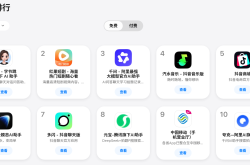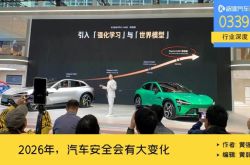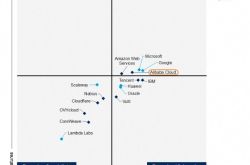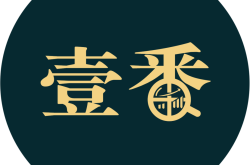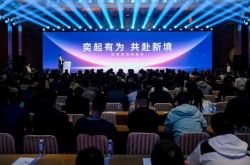BMW Unleashes Its Ultimate Electric Tech: A Glimpse into the Potential of Locally-Produced iX3—Is the Luxury Icon Ready for a Resurgence?
![]() 11/25 2025
11/25 2025
![]() 329
329
At the Guangzhou Auto Show held at the end of the year, BMW's lineup placed a stronger emphasis on performance and customization than ever before. This included the unveiling of the electric MINI COOPER PAUL SMITH designer edition at the MINI booth and the introduction of the all-new BMW M3 Touring—a high-performance M wagon making its debut in the Chinese market.
The 2026 BMW X5 embodies BMW's pragmatic and responsive approach in the Chinese market. Facing fierce competition from local brands in terms of intelligent features and comfort-focused configurations, BMW has proactively refined its product strategy. The 2026 X5 now comes standard with professional driving assistance, front-seat ventilation, comfort seats, rear-seat heating, 21-inch wheels, Harman/Kardon premium audio, and a head-up display across all trim levels.
Of course, the biggest highlight was the debut of BMW's next-generation tech suite. While the locally-produced long-wheelbase iX3—the epitome of these innovations—has yet to make its official entrance, BMW has provided an early preview of the new model's capabilities through core technologies spanning powertrain, handling, interaction, and safety.
The next-gen tech represents BMW's latest electric technology arsenal, showcasing the brand's technical prowess and transformation as a seasoned luxury automaker. This tech suite is considered BMW's "ace card" in electrification and intelligence. The locally-produced next-gen BMW iX3, set to launch in 2026, will be the first model to feature this technology, with more models to follow shortly after.
According to plans, the long-wheelbase next-gen BMW iX3 will enter the market in the second half of 2026. Over the first ten months of this year, BMW Group's new energy vehicle (NEV) sales in China have surged by over 40% year-on-year. The arrival of next-gen models is expected to further boost its NEV sales. However, BMW also faces intense competition from Chinese brands in the mid-to-high-end NEV market and challenges in scaling up next-gen production. BMW will need to rethink its NEV pricing strategy and product tech refresh rate in China.
In the first three quarters of this year, BMW delivered 464,000 vehicles in China, encountering growth pressures. Thus, the 2026 local launch of next-gen models will be a critical battleground for BMW in China.
01
What Are the "Ace" Technologies?
The core strength of BMW's next-gen tech suite lies in its seamless integration of performance and intelligence, with BMW still emphasizing handling prowess.
According to BMW engineers, the BMW Chassis Super Brain integrates core functions like powertrain, braking, and steering into a single control unit for a 1-millisecond response time—ten times faster than previous systems. This technology enhances dynamic handling precision and, through efficient energy recovery, eliminates the need for traditional brakes in 98% of driving scenarios, significantly boosting efficiency. Additionally, it flexibly supports 1 to 4 motors, catering to everyday commuting and high-performance racing needs, showcasing BMW's deep expertise in driving control.
The next-gen electric drivetrain achieves over 900 km of CLTC range for the locally-produced next-gen BMW iX3 by combining 4695 large cylindrical cells with an 800V high-voltage platform, enabling 400 km of range in just 10 minutes of charging. BMW's proprietary 4695 large cylindrical cells (46mm diameter, 95mm height) boost energy density by 20% over the previous generation. The cathode uses high-nickel ternary + cylindrical casing for stable nickel performance. The anode employs silicon-carbon with custom electrolytes to extend battery life. Structurally, the pressure relief valve is placed at the bottom to prevent explosions.
From a manufacturing perspective, full-tab electrodes replace dual-tab designs (as seen in Mercedes' recent release) to reduce internal resistance and heat, improving efficiency. The battery also excels in charging efficiency, delivering 400 km in 10 minutes and 80% charge in 21 minutes. Its innovative combination of a field-excited synchronous motor and asynchronous motor reduces energy loss by 40% and boosts overall efficiency by 20%, highlighting BMW's tech prowess in the power electronics system.
In driving assistance, following the July announcement of its partnership with Momenta, BMW showcased a new-gen intelligent driving assistance system co-developed with Momenta at the auto show. Based on Momenta's AI large model-driven "perception-planning-control" integrated architecture, the system enables end-to-end implementation in the locally-produced next-gen BMW iX3. Currently, BMW's German R&D team is conducting virtual simulations at the group's largest global driving simulation center, while the Chinese R&D team is performing real-world development and testing across four major innovation hubs (Beijing, Shanghai, Shenyang, Nanjing) to prepare for next year's model launch.
For intelligent interaction, BMW's pioneering Panoramic iDrive system creates an immersive smart cockpit experience through four interfaces, including horizon-view panoramic displays and 3D head-up displays. The China-exclusive BMW Next-Gen OS X, led by BMW's Chinese R&D team, emphasizes integration with domestic app ecosystems, featuring a DeepSeek-powered BMW Personal Voice Assistant, deeply integrated HUAWEI HiCar, and a customized Gaode Maps function.
Currently, the China-tailored long-wheelbase BMW iX3 is in the final testing phase before mass production. The model is undergoing rigorous driving tuning and tests at the Nürburgring Nordschleife and global locations, with over 300 domestic test vehicles conducting full-vehicle evaluations in China to better suit local driving habits.
The locally-produced next-gen BMW iX3 represents BMW's peak capabilities in intelligence and electrification, with deep expertise in powertrains, chassis tuning, and dynamic control. It showcases the strengths of traditional luxury brands in mechanical excellence and electronic integration—areas where domestic NEV startups lag. Additionally, traditional luxury brands' engineering prowess and global R&D validation systems ensure new vehicle safety and reliability through testing across diverse global road conditions and extreme scenarios, creating barriers that Chinese brands cannot replicate shortly.
Equally important is BMW's strong brand appeal in China's luxury market. The brand's DNA of "Sheer Driving Pleasure" remains attractive in the electric era. As China's luxury EV market matures, BMW's next-gen models have the potential to secure a foothold in the premium segment, leveraging its heritage and global quality standards.
02 Product Launch Is Just the First Step
However, speed remains a critical challenge for BMW's next-gen models. BMW unveiled its next-gen platform in 2021, with three years passing between the debut of the Neue Klasse concept car and the September 2024 Munich Auto Show launch of the first next-gen production model. The China-made long-wheelbase version won't arrive until the second half of next year. This three-to-four-year timeline far exceeds the product iteration speed of Chinese automakers (averaging 1.5–2 years), meaning many planned tech highlights may lose their leading edge by mass production—despite BMW offering more mature and reliable quality and performance.
For instance, BMW's proud "horizon-view panoramic display" technology, patented in 2021, won't enter mass production until 2026. Meanwhile, Xiaomi has already delivered a similar screen concept in a domestic EV model launched in May this year. While technical paths and final mass-production effects may differ, BMW lags behind local rivals in innovating tech deployment, risking "innovator's dilemma" scenarios.
The same applies to power electronics. By 2025, a 900 km CLTC range and 10-minute, 400 km charging will be top-tier, but currently, the locally-produced Zeekr 009 and Voyah Zhiyin also achieve 900 km CLTC range. The NIO ET7, equipped with a 150 kWh ultra-long-range battery, has exceeded 1,000 km in real-world tests. For charging speed, the Exeed Star Era with CATL's Shenxing ultra-fast-charging battery achieves 400 km in 10 minutes, while the Li Auto i8 supports 500 km in 10 minutes using 5C ultra-fast chargers. BYD's full-domain kilovolt high-voltage architecture with megawatt flash-charging tech is already mass-produced in 200,000-yuan-tier models.
In intelligent driving, most domestic brands have rolled out city navigation assist on mass-market premium models. Today, end-to-end intelligent driving, Qualcomm 8295 chips, 800V high-voltage platforms, and integrated die-casting have moved from innovation to widespread adoption. Many domestic brands are now focusing on next-gen solid-state batteries and L4 autonomous driving, pushing China's NEV market into a "tech, price, and ecosystem" arms race. For BMW, its next-gen tech core is balancing advancedness and reliability—whether this gains market acceptance remains uncertain.
Of course, some domestic models only solve the "availability" issue, with usability still questionable. For BMW, the potential opportunity lies in "having better versions" of the same features—though it must avoid scenarios where rivals offer something it lacks. In Chinese consumers' minds, luxury brands must set technological benchmarks.
Pricing is also critical. Facing cost-effective challenges from domestic NEV startups, BMW must balance luxury brand positioning with market penetration, testing the pricing strategy of the locally-produced next-gen BMW iX3. Currently, Mercedes' CLA EV and Audi's E5 Sportback have entered the market with starting prices below 250,000 yuan, disrupting traditional luxury pricing strategies. How will BMW respond next?
Undoubtedly, 2026 will be a pivotal year for traditional luxury brands in China. The launch of the locally-produced next-gen BMW iX3 will be a critical test of BMW's tech transformation and market adaptability. Only by accelerating iteration speeds and delivering user-centric product definitions can BMW hold its ground and emerge victorious in China's fiercely competitive market.

